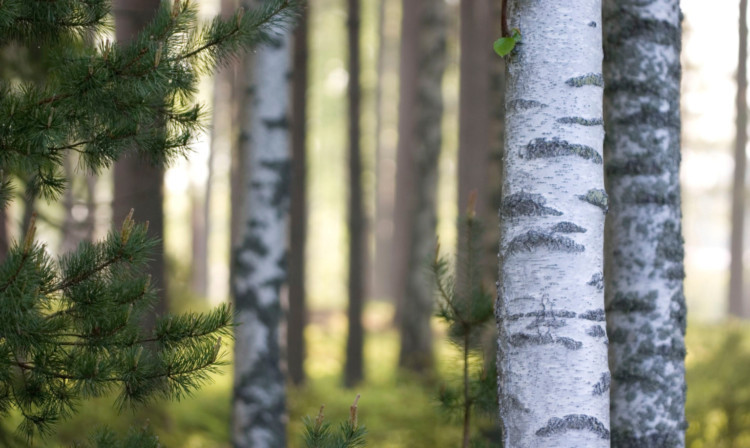As the Scottish Government begins the consultation process to decide on whether we should have a national tree, and what it should be, Jim Crumley tells us what he thinks of the idea.
Someone asked me not long ago why I was obsessed by trees. “It’s not my obsession,” I said. “It’s nature’s obsession. Nature’s default position is always to plant a tree.”
Near where I used to live in Balquhidder there was a small spruce plantation. It has been planted by the Forestry Commission and then sold to the woman who lived next door. She had it felled and cleaned up a bit, then left it. Ten years later, it is now a birch wood, the young trees so dense you can barely walk through it. That will resolve itself in time as the stronger trees crowd out the weaker ones and make space for themselves, thereby creating the essentials of a good wood: canopy, undergrowth and clearings.
No-one managed this birch wood, which means that nature was allowed to do as it wished, which is pretty rare in our 21st century landscape. But this small example three or four acres is as eloquent as anything I have ever seen about the wisdom of giving nature its head. All that happened here is that nature was handed an opportunity.
Consider what might be achieved over, say, 10,000 acres. If you want to know that looks like, I urge you to visit the Glen Finglas reserve of the Woodland Trust Scotland, where the opportunity is being enhanced by rigorous control of the old over-grazing regime, hand-planting of many thousands of native trees and the removal of non-native ones. The results are nothing short of revolutionary, a revolution of natural forces.
Nature’s obsession with trees is easily explained: no other landscape creates as many opportunities and as much natural diversity as a treed landscape. In young life, maturity and in death, trees just go on giving and giving.
All of this is by way of explaining why I think a national tree for Scotland is an idea whose time has come. The public consultation process has just begun, officially embraced by the Scottish Government and you get to vote for any native tree you like, although a Woodland Trust poll a few weeks ago suggests that the Scots pine will run away with the popular vote. I am with the popular vote: the Scots pine should be the national tree.
Why a national tree, at all? One reason and one only: its symbol will publicise trees, will make us think about trees and given the weary state of native woodland across much of Scotland, it is time (it is long past time) many more of us learned the wisdom of trees.
Why the Scots pine? Because no tree so galvanises the Scottish landscape. A good pinewood makes demands on you. It asks you to slow your footfall, to move at its pibroch rhythms. It asks you to read nature. It asks you to tune in to its speech.
It is phenomenal in sunlight or rain, big winds or windless heavy snowfall.
Sunlight imbues the pervasive bottle green with black, dark blue, yellow, gold, yet all of these are essentially green. Shadows are hard and brittle, not pliable and dappling like an oak wood. They lie among the trees like dark lace. The air fills with the hybrid scent of pine and its juniper compatriot and nothing makes a more fragrant campfire.
Rain intensifies the scent, layers it enticingly with bog myrtle blown in from unseen clearings. A pinewood glows in rain; the very trees shine and their colours intensify. Bark deepens to something improbably red, junipers acquire a fleece of silver.
A pinewood rocks in big winds. The canopy sounds like squads of jackdaws. Trees lean and groan against each other and that sounds like you have stumbled on a treeful of capercaillies.
Heavy, windless snow cancels everything, lays a pale grey shroud over everything that was dark and hard-edged and makes utter silence that is somehow the opposite of peaceful, silence laced with tension. The oldest tree in the wood, perhaps 400 years old, whispers to you of wolves that brushed snow from its bark.
What more do you need of a national tree?
So, now Scotland has two good reasons for going out to vote in the next 12 months. There is the independence referendum a year hence, when, if we vote yes, we then get to decide the kind of Scotland we would like to live in, which has always seemed to me like a good idea.
But before that, we get to decide if we would like to have a national tree, and if so, which tree it should be. As a nature writer, I am not at all certain about which of these two votes is more important.
An independence vote gives us control over our own affairs, but it is essentially a vote that weighs the priorities of the people. But a vote for a national tree, a symbolic re-awakening of the crucial place of trees in the lives of absolutely everything I wonder if that is that not a greater undertaking?
You’ve got three months. Do yourself, your country, your landscape and absolutely everything in nature a favour go and get obsessed by trees.
To take part in the consultation go to http://www.forestry.gov.uk/scotlandsnationaltree
